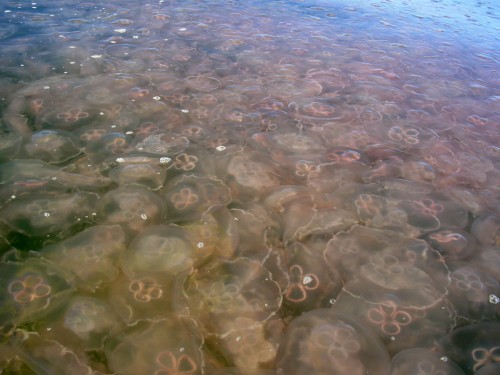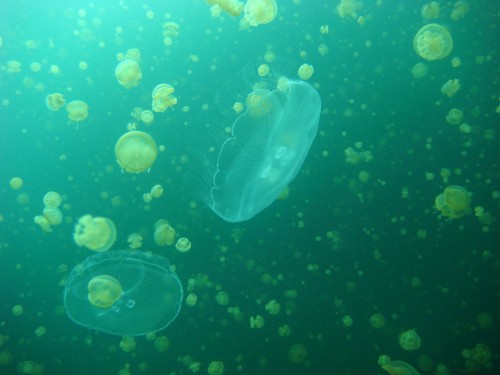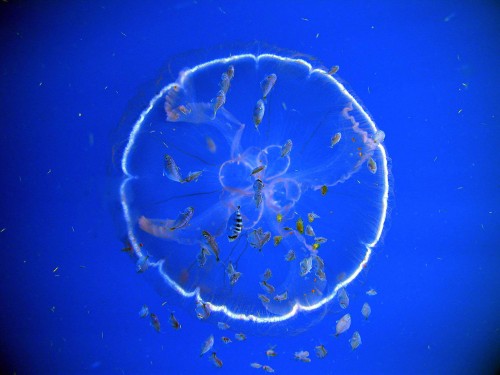
Massive swarms of stinging jellyfish and jellyfish-like animals are transforming many world-class fisheries and tourist destinations into veritable jellytoriums that are intermittently jammed with pulsating, gelatinous creatures. Areas that are currently particularly hard-hit by these squishy animals include Hawaii, the Gulf of Mexico, the east coast of the U.S., the Bering Sea, the Mediterranean Sea, Australia, the Black Sea and other European seas, the Sea of Japan, the North Sea and Namibia.

Massive jellyfish swarms–some of which cover hundreds of square miles–have caused injuries and even occasional deaths to water enthusiasts, and have caused serious damage to fisheries, fish farms, marine mines, desalination plants, ships and nuclear power plants. Since the 1980s, jellyfish swarms have cost the world’s fishing and tourism industries alone hundreds of millions of dollars and perhaps even billions of dollars.
From large swarms of potentially deadly, peanut-sized jellyfish in Australia to swarms of hundreds of millions of refrigerator-sized jellyfish in the Sea of Japan, suspicion is growing that population explosions of jellyfish are being generated by human activities. Human activities that have been suggested by media reports and scientists as possible causes of some jellyfish swarms include pollution, climate change, introductions of non-native species, overfishing and the presence of artificial structures, such as oil and gas rigs. But which of these human activities, if any of them, are really to blame?

Surprising insights about the causes and character of jellyfish blooms are revealed in a new online multi-media report by the National Science Foundation. Titled Jellyfish Gone Wild: Environmental Change and Jellyfish Swarms, the report is posted here.
Jellyfish Gone Wild features eye-popping photos and videos of jellyfish, stinging statistics about jellyfish swarms and thought-provoking explanations of how and why jellyfish swarms form. This reader-friendly report provides a serious overview of the science of jellyfish swarms that is nevertheless tinged with the kind of humor (jelly jollies) demanded by such intrinsically creepy creatures. Jellyfish Gone Wild is ideal for reporters, general readers, beach-goers, fishermen, teachers, students, researchers and conservation organizations.
View videos of a researcher swimming with a giant jellyfish and the tangled tentacles of a lionel’s mane jellyfish.
Give it a look, you may never look at global warming the same way again.